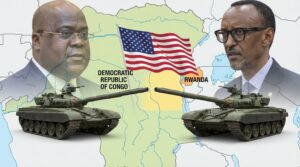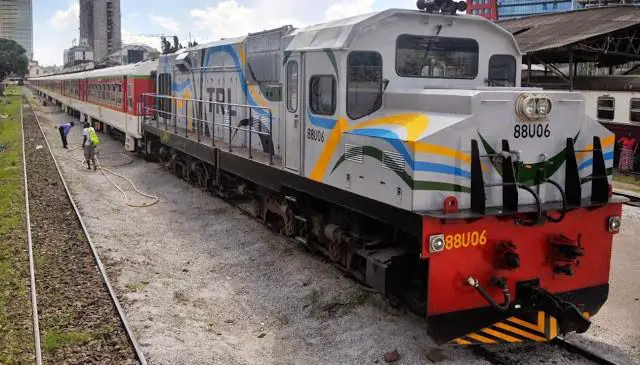- Africa’s Green Economy Summit 2026 readies pipeline of investment-ready green ventures
- East Africa banks on youth-led innovation to transform food systems sector
- The Washington Accords and Rwanda DRC Peace Deal
- Binance Junior, a crypto savings account targeting children and teens debuts in Africa
- African Union Agenda 2063 and the Conflicts Threatening “The Africa We Want”
- New HIV prevention drug is out — can ravaged African nations afford to miss it?
- From banking to supply chains, here’s how blockchain is powering lives across Africa
- Modern railways system sparks fresh drive in Tanzania’s economic ambitions
Author: Padili Mikomangwa
Padili Mikomangwa is an environmentalist based in Tanzania. . He is passionate about helping communities be aware of critical issues cutting across, environmental economics and natural resources management. He holds a bachelors degree in Geography and Environmental Studies from University of Dar es Salaam, Tanzania.
Tanzanian government has put in place measures to stop use of any Tanzanian, without paying for it. This pledge was made by the Minister of Information, Culture, Arts and Sports, Hon. Dr. Harrison Mwakyembe in a public meeting with entertainment industry stakeholders in Dar es Salaam, to discuss merging of three bodies: COSOTA (Copyright Society of Tanzania), BASATA (Arts Council of Tanzania) and the Tanzanian Film Board for better sectorial operations. “No more using artists properties without paying, in wedding ceremonies halls or kitchen parties, all of them must contribute. How comes master of ceremonies (MC) get paid and use…
For the second time, TEDX Oysterbay brought together a diverse range of experts, practitioners, artists, thinkers, visionaries and educators before an idea-thirsty community to the Little Theatre in Dar es Salaam. 12 TEDx speakers with interesting ideas challenging social norms and practices, shared their ideas before an audience of 100 people and many more via social media. TED is a nonprofit devoted to spreading ideas, usually in the form of short, powerful talks. TED is the convergence of Technology, Entertainment and Design, and today covers almost all topics — from science to business to global issues — in more than…
The 39th Southern African Development Community (SADC) summit, which was hosted in Dar es Salaam, Tanzania for two days saw the participation of 16- member states, delegates, and other invited guests. The summit which took place on August 17th and 18th saw the Tanzanian President, Hon. John Pombe Joseph Magufuli assuming Chairmanship of SADC for one year till August 2020, indicating another signal of faith to the president and his regime in steering the bloc to the right socio-economic and political direction. As one of the largest economies in Africa, prior to the summit Tanzania via its Ministry of Industry…
For over 20 years, Acacia and its forerunner mining companies including African Barrick Gold, Barrick Gold, Placer Dome, Pangea Minerals and Afrika Mashariki have been operating in Tanzania in three gold mines, Bulyanhulu, Buzwagi and North Mara, found in the north-west region of Tanzania. Acacia-Tanzania’s largest gold producer was recently cleared by the Magufuli government and resumed its metal concentrates exportation after a series of regulations led by The Mining Commission of Tanzania Ministry of Minerals that impeded the export of the mineral. In a press release published by Acacia on 15th August, export permits are now received by Acacia that…
Tanzania has recently lifted its halt on Acacia Mining exporting its gold which was issued on March 3rd 2017. The leading African gold miner with over 15 years, faced the suspension after Government of Tanzania took a keen eye on its mining operation in North Mara, located in the northern part of Tanzania. Acacia published a press release on August 9th documenting the good news relayed by the Mining Commission of Tanzania. “Acacia notes that today it’s North Mara Gold Mine has received a letter from the Mining Commission of the Tanzanian Ministry of Minerals (the “Mining Commission”) authorizing the…
Powering 58 million Tanzanian lives has been featured by numerous large-scale electricity generation projects. This includes the controversial, USD 3 billion Rufiji Hydro Project construction at, Stieglers Gorge and the 150 MW solar farm to kick off December 2020. Electricity in Tanzania has never been one energy-source show. Solar energy, biomass, and hydro-power have been contributing to electrifying urban and rural Tanzania for decades. According to Tanzania Electricity Supply Company (TANESCO) data, a state-owned company responsible for generation, transmission and distribution of electricity, 1, 382.95 MW are generated from hydropower (43 percent) and thermal (57 percent) sources. Available data on…
The Standard Gauge Railway (SGR) project, is a railway under construction in Tanzania which was seeded in 2016, linking the country’s strategic regions and neighboring countries including, Rwanda, Uganda, Burundi and the Democratic Republic of Congo (DRC), the anticipated project with the line length of approximately 1,800 kilometers, intends to revolutionize mobility and distribution of commodities in Tanzania, through replacing the ineffective meter-gauge railway system. The Turkish (Yapi Merkez) contractor, is on the clock to bring to life the awaited transportation machine that, might transform Tanzania’s economy (for starters; production, labor supply, and consumption). Tanzania Railway Corporation (TRC), the state-owned…
On June 1, 2019, Tanzania ushered in a new way, for domestic packaging without plastic bags. Plastic Manufacturing Association of Tanzania (PMAT) stated that the government would lose more than 50 billion TZS, in terms of annual tax, including corporate tax, excise duty, and city service duty, that they paid. Now, the Tanzanian packaging market is game, as cheaper and durable packaging solutions are yet to surface within communities’ reach. Local, entrepreneurs artisans and recyclers stand to generate millions in revenue, through making renewable bags that could replace the beloved-plastic bags, which were previously sold at 100 TZS a piece,…
Aviation stands to be Tanzania’s greatest source of investment, as the industry is considered to be one of the most preferred routes to enter the country. Via data from the US Government’s International Trade Division, there has been a 62% increase in air passengers from 2.1 million in 2010 to 2.5 million in 2015 (these figures include internal air transportation). According to African Development Bank, Tanzania hosts 368 airports managed by Tanzania Airports Authority (TAA), wherea58 airports are in mainland and more than 300 private airstrips in Tanzania which are under mining companies and tour operator’s As a country with…
Approximately 10% of Tanzania’s landmass is covered by freshwater. This essentially means that nearly 4,868,424 million hectares of wetlands can generate billions of dollars in revenue earnings for the country if harnessed correctly. When looking at this in the greater context of East Africa, Tanzania is the leading country with the largest freshwater reserves, an economic advantage over its neighbors. The Great Lakes region of East Africa, that encompasses Kenya, Uganda, Tanzania as the main countries, are currently undergoing dynamic changes with respect to various water demands occurring across the region. Still, Tanzania remains to reap significant rewards. The Food and…





